Skip to the Climate Solutions
 The High Costs of Climate Change
The High Costs of Climate Change
September 24, 2023
The compounding costs of climate change total trouble for insurance companies... and people too.
AAA, Allstate, American Family, Farmers, Nationwide, State Farm, Erie
Insurance Group, and Berkshire Hathaway have told regulators that
climate change has led them to stop writing coverages in some regions,
exclude protections from various weather events, and raise premiums and
deductibles.
The wildfires in California have been more frequent and intense
because of increased temperatures, droughts, and earlier snow melts.
California has more than 1.2 million homes at moderate to extreme risk
of wildfire damage. Allstate, State Farm, American International Group,
and Chubb have announced they will stop issuing new policies for
California homes. The state is just too risky.
Flood waters and hurricanes continue to swamp Florida. A third of Florida's population lives in flood-prone areas, and even more Floridians are at risk from hurricanes. Home insurance policies in Florida now average $6,000 per year,
more than double the national average of $1,700. Florida home insurance
damage claims are capped at $700,000. And more than 13% of Florida homes are uninsured, about double the national average.
U.S. insurance companies have paid $295.8 billion in natural disaster losses from 2020 to 2022, a record for any three-year period.
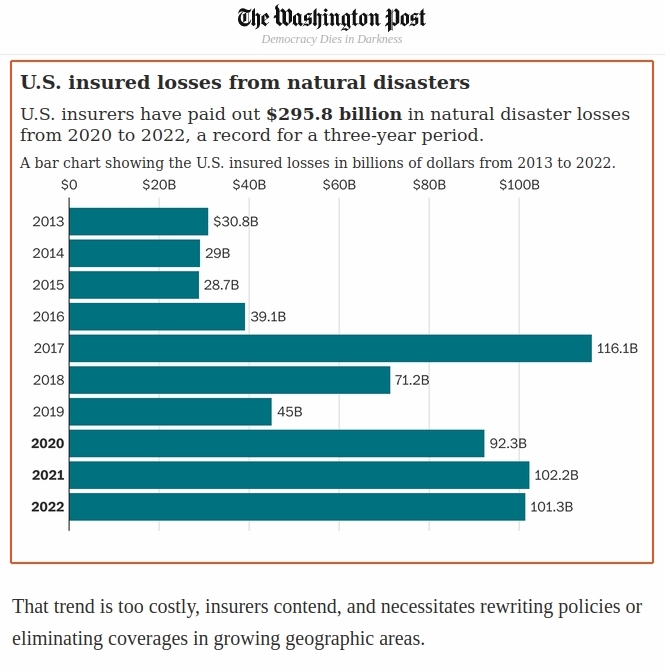
Summer of 2023
This summer had record heat, measured as global and sea surface temperatures.
June of 2023 was the hottest June on record. July was not just the
hottest July but the hottest month since record keeping began in 1880.
The record setting July heat came from equatorial Africa, Alaska,
northern Canada, Mexico, and central America. Phoenix Arizona exceeded
110 degrees for all the days of July. And August of 2023 was the hottest August on record.
The roughly 6,000 Canadian wildfires in 2023 have scorched 34 million
acres (the size of New York state). That's three times larger than any
U.S. fire season and 10 times the 10-year average in Canada. The
Canadian wildfires created 133 pyrocumulonimbus clouds (pyroCbs) with
lightning, great walls of fire, and firenados with heights of 3,000
feet and speeds up to 140 mph. The pyroCbs are associated with volcanic
eruptions and a typical year has 40 to 50 worldwide. Over 150,000
Canadians are currently displaced, with 145 million more in North
America choking on toxic wildfire smoke. And next summer is expected to
be worse.
The deadliest wildfire in modern U.S. history tore through Lahaina Maui
on August 4th, leaving 97 dead and $5.5 billion in property damage.
Is climate change good for anything? Yes, climate change is great for poison ivy.
Music Associations: Michael Murphey - Wildfire
& Jerry Lee Lewis - Great Balls Of Fire
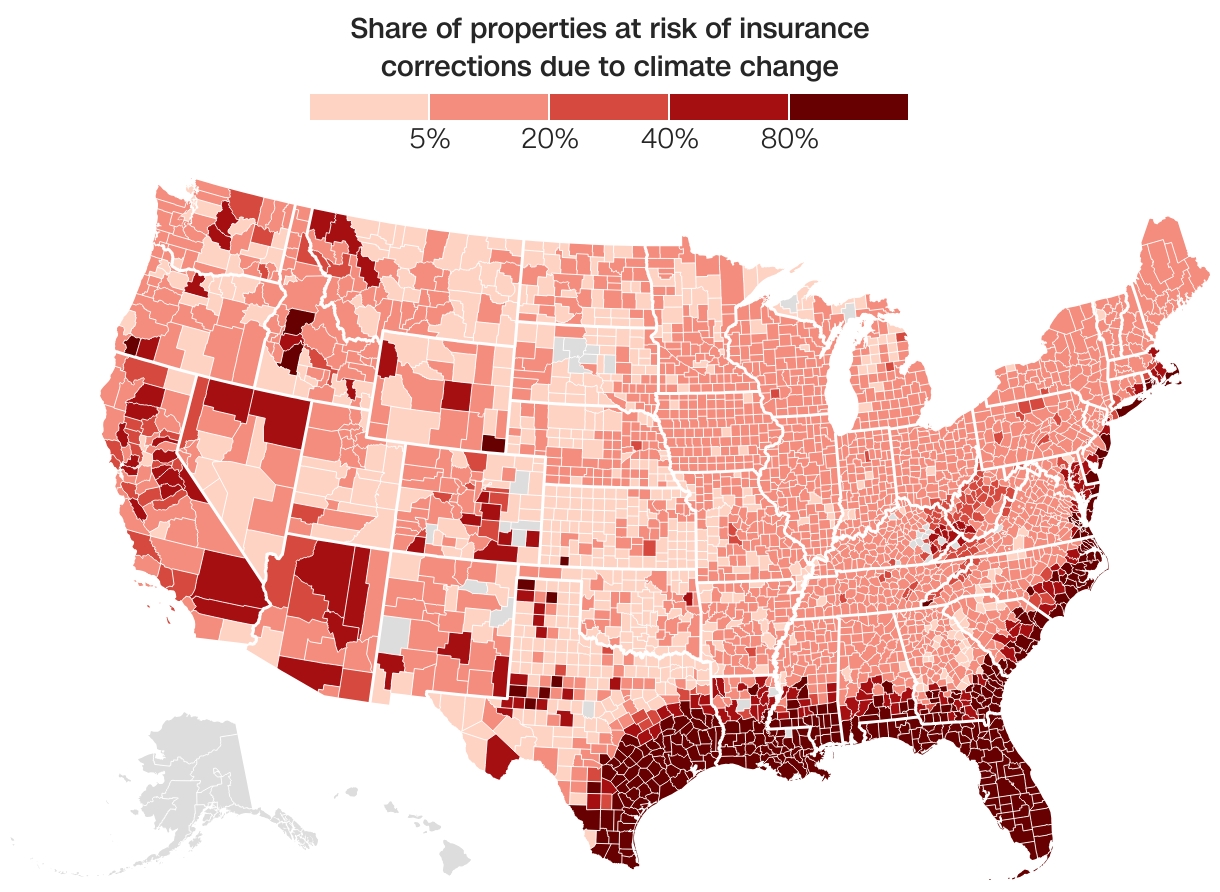 Songs of Sweltering
Record Heat
Songs of Sweltering
Record Heat
July 26, 2023
The average planetary temperature hit a record high of 63° F last Thursday, July 20th. Sorry. That's on me. I used the microwave that night to warm up some vegetables.
Anthropogenic climate change caused June 2023 to be Earth’s warmest June on record and is responsible for shattered
temperature records this month in China, Spain, and the southern US.
China set a new national daily temperature record of 126° F
(52.2° C), at the Sanbao weather station in the Xinjiang Uygur
region. Catalonia in Spain recorded its hottest-ever temperature of 113.7° F (45.4° C).
El Paso has endured 40 consecutive triple-digit days
with at least a few more scorching hot days expected this week, about
twice as long as El Paso's previous record. The streak began June 16.
Phoenix has reached 110 degrees or higher for 25 straight days,
continuing the record for the most days in a row with temperatures that
hot. Phoenix has also had 15 days in a row with lows in the 90s, another
all-time record. The pavement there is more than 40 degrees hotter than the ambient temperature,
hot enough to burn skin. Phoenix Fire Captain Kimberly Ragsdale told
ABC15, “We're seeing people with heat stroke, heat exhaustion,
dehydration, and we are seeing an increase to burn injuries to the
skin.”
At the Las Vegas airport last week, Delta flight 555 sat on the tarmac in 111° F (43.8° C) heat with no air conditioning for four hours.
Multiple passengers were seen by first responders, and a flight
attendant and a passenger were transported to a local hospital.
Someone on social media commented, “Oh, the irony. People sitting on a
plane in the extreme heat that's a direct result of climate change, and
not one person says that maybe, just maybe, the best reason never to
fly Delta (or any airline) is to preserve even a tiny chance of
avoiding catastrophic climate change.”
More than 200 heat-related deaths have been reported in
Mexico. Cattle have also died in Mexico's heat. The heat has also
damaged cotton crops in China and olive crops in Spain. In Europe in
2022, an estimated 60,000 people were killed by the heat.
Sea water hit hot tub level at the tip of Florida. A Manatee Bay buoy recorded 101.1° F
Monday evening, which may be a record sea water temperature, July 24th.
Hot sea water is causing devastating coral bleaching and death in the
supposedly resilient reefs of the Florida Keys.
Record wildfires continue to burn Canada.
More than 650 wildfires were out of control as of July 24th. According
to the Canadian Interagency Forest Fire Center more than 11 million
hectares have already burned in 2023, compared to the 10-year average
of about 800,000 hectares.
And the north Atlantic Ocean Gulf Stream may collapse as soon as 2025,
as part of the Atlantic Meridional Overturning Circulation (Amoc). The
collapse of the currents would have disastrous consequences around
the world, severely disrupting the rains that billions of people depend
on for food in India, South America, and west Africa. It would increase
storms and drop temperatures in Europe, and lead to a rising sea level
on the eastern coast of North America. It would also further endanger
the Amazon rainforest and Antarctic ice sheets. “I think we
should be very worried,” said Peter Ditlevsen, at the
University of Copenhagen in Denmark, and who led the study in the
journal Nature Communications. “This would be a very, very large change. The Amoc has not been shut off for 12,000 years.”
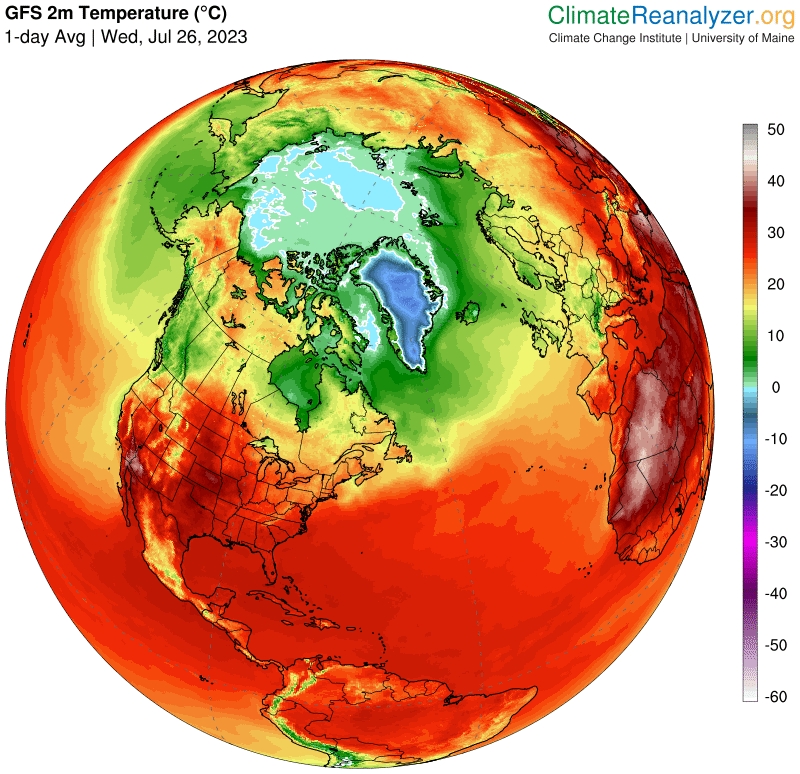
Music Association: Martha & the Vandellas - Heat Wave
That Blew Up In His Face
Independence Injuries
July 8, 2023
The U.S. Consumer Product Safety Commission just issued their Fireworks Annual Report for 2022.
That year had about 10,200 fireworks-related injuries with 73%
occurring during the 30 days surrounding July 4th. Firecrackers caused
the most emergency injuries (1,300) followed by sparklers (600).
Sparklers burn at about 1,800 degrees Fahrenheit. The sparks of
sparklers are ejected bits of melted aluminum, magnesium, iron,
titanium, and ferrotitanium. Mortar-style aerial fireworks killed
most of the 11 fireworks-related fatalities. The CPSC also bought and
tested fireworks, finding illegal components, faulty fuses, prohibited
chemicals, and overloaded materials. China manufactures more than 98% of U.S. consumer fireworks.
 CPSC 2022 Fireworks Annual Report
CPSC 2022 Fireworks Annual Report
Some 2023 Fireworks Fatalities
This past week, a man was killed and four others were injured
when a house blew up due to preparations of 300 three-inch fireworks shells (Gilmer, Texas). A woman died from another home fireworks explosion and ten others were injured (Ottawa County, Michigan). Another man died when a fireworks shell exploded while still in its mortar tube, impacting the man in his hand and chest (Charles County, Maryland). Yet another man died after cutting the wick of a commercial-grade firework and lighting it in a homemade mortar tube (Boone County, Kentucky). A 15-year-old was killed playing with fireworks (Amarillo, Texas). A house was set ablaze from a neighbor's fireworks, killing a man who had been asleep (St. Charles County, Missouri).
Some 2023 Fireworks Injuries
An illegal fireworks display stand tipped over and launched shells
into a crowd, burning a 16-year-old girl and another spectator (Somers, Connecticut).
A legal mortar-style firework tipped over, launched a horizontal shell,
landing in a crowd of spectators, injuring several people (Allegan, Michigan). A malfunction ignited all the fireworks on a private boat dock, injuring 3 and sending the crowd running (Montgomery County, Texas). A fireworks explosion caused head and leg injuries (Yarmouth, Massachusetts). A man lost part of his hand while lighting fireworks in an intersection (Los Angeles, California). Two men suffered hand and fingers amputations while shooting off fireworks (London Mills, Illinois). A 14-year-old boy may lose sight after a roman candle hit him in his right eye (Holcomb, Missouri).
Cleaning up fireworks debris, a 13-year-old boy picked up a firework and
it exploded in his hand, causing a partial amputation of all the
fingers of his right hand and burns to his face and chest (Lauderhill, Florida). A man was injured after an aerial firework was launched into his vehicle (Bargersville, Indiana).
Another man was detonating numerous commercial-grade fireworks. A
mortar-style aerial shell failed to launch. The man looked into the tube and the firework
discharged, striking his face and then exploding. The man sustained
major injuries to the head and became unconscious (Cary, Illinois). When you stare into the firework launch tube, the firework launch tube stares back at you.
 Dude, that's a lot of DUDs (dangerous unexploded devices).
Dude, that's a lot of DUDs (dangerous unexploded devices).
Aren't commercial-grade fireworks illegal in Illinois, like in Minnesota?!?
Yes, but the United States Independence celebration is about 50
very different states and one of those different states is Wisconsin,
which has always prioritized taking money from out-of-state tourists.
Fewer tourists early this century meant Wisconsin decided to sell
dangerous fireworks to travelers. Fireworks stores line up on the Wisconsin border, a booming industry.
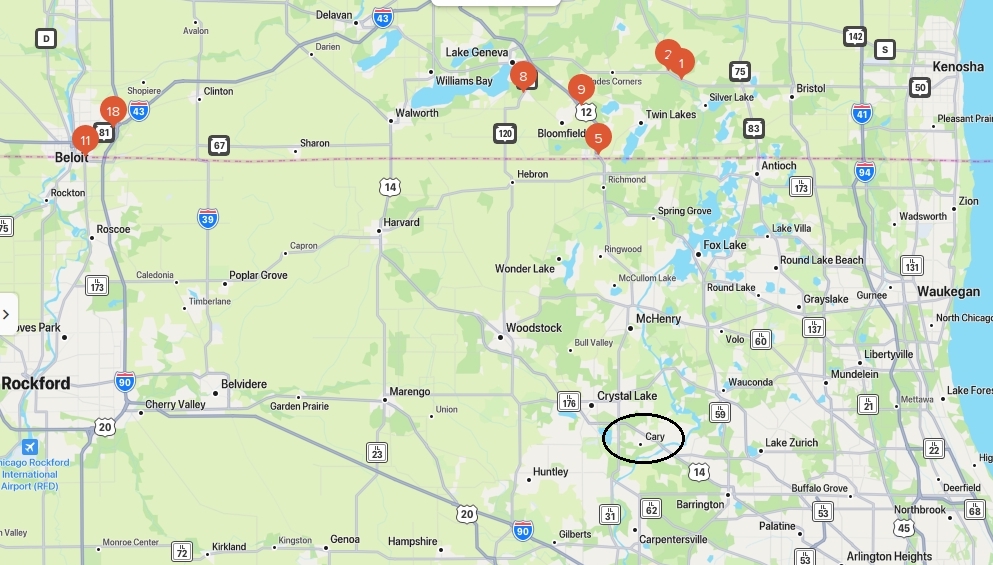
Wisconsin Fireworks Tourists
Wisconsin statute 167.10 Regulation of fireworks:
“Paragraph (a) does not apply to: ... 8. The possession of
fireworks by a person who is not a resident of this state if the person
does not use the fireworks in this state.”
What that means is the dangerous stuff is only sold to non-residents.
Genoa City, Wisconsin Fireworks
So if you live in Cary, Illinois where fireworks are
illegal, you can drive 23 miles north to Genoa City,
Wisconsin (orange 5 on the map). That's where American Fireworks sells firecrackers, roman candles, rockets, missiles, reloadable mortars, helicopters, finale racks, and 500 gram aerial repeaters like:
* 1 Minute Ride 42 Shot
* 2 Minute Show in a Box (53 shots) - promising “you are going to be the life of any party.”
* All Night Long - lasts 39 seconds on YouTube but the tinnitus will last forever
Black Bull Fireworks is also in Genoa City (orange 9 on the map) and has many multi-shot 500 gram repeaters:
* 312 shot War Machine
* 220 shot Bad Boy
* 220 shot We Will Rock You
* 150 shot Black Dynamite
* 128 shot Cold Killer
* 102 shot Goooooal
* 16 shot Merica
*
16 shot, 32 colors One Bad Mother-In-Law
* 12 shot Big Man
* 148 shot 1000 Gram Finale
with a red comet, a green comet, a yellow comet, another red comet,
another green comet, a crackling comet, a gold mine with a rainbow of
other colors, and a red and green burst with gold glitter (video).
Not that the man who lost his face due to a failed firework shopped at
either American Fireworks or Black Bull Fireworks, just over the border
in Genoa City, Wisconsin. Maybe the 58-year-old man drove across the
width of Chicago to the piles of fireworks stores on the Indiana
border. Maybe.
Hudson, Wisconsin Fireworks
Americans purchase more than 258 million pounds of fireworks every year.
Just over the Wisconsin border from Minneapolis and St. Paul, Hudson
has at least three fireworks stores freely selling to Minnesota
residents: Exit 1 Fireworks, Fireworks Nation, and Venture Fireworks (with a 5% discount for cash).
Exit 1 Fireworks has firecrackers, roman candles(40-80'), rockets (40-300'), and multi-shot 500 gram finales, featuring the 220 shot Amazing Ballet (video).
Fireworks Nation makes clear that Wisconsin fireworks laws
specifically prohibit: firecrackers, wheels, torpedoes,
skyrockets, roman candles, aerial salutes, and bombs. Wink. The
Fireworks Nation firecracker products list features 4000 firecrackers rolled into one Special Firecracker (video). It also features 5000 firecrackers rolled into the Red Jumbo M5000 (video). It also also features 16000 firecrackers rolled into another Special Firecracker. (video). Their roman candle products list features the 70 shot Flame Thrower (video) and the 250 shot Machine Gun (video). Their Saturn missile list includes the 20 extra large Saturn missile battery (video). Their artillery shells list features the 10 shot Light The Night artillery shells (video). Their 500 gram finale cakes list features the 150 shot Black Dynamite that fires off about 2 ½ shots per second to last a full minute (video). It also features the 168 shot Rainbow Overload (video) and Sparta (video). It also also also features the 250 shot Teknocolour cake (video & video). They also have fountains and rockets.
Toxic Smoke from Fireworks
A 14-year fireworks air pollution study from July 2020 revealed high levels of lead particles
in fireworks smoke, despite the fact that lead is not allowed in
consumer fireworks. A fountain firework called a Black Cuckoo
produced particulate matter with lead concentrations greater than
40,000 parts per million. That means the smoke was four percent lead. Published in the journal Particle and Fibre Toxicology,
the study is believed to be the first to examine the effects of
fireworks exposure in human cells and living animals, and to test for
particles of common fireworks metals thrown into the air.
Lead
used to be deliberately included in the manufacturing of fireworks.
Lead provided the little explosive, crackling stars that spit out of
fireworks. Lead leads to brain damage, cognitive impairment, decreased
IQ in children, and other toxicity and was replaced long ago with
bismuth oxide. Apparently Chinese manufacturers didn't get the memo.
Aluminum particles were very high in firecrackers. Aluminum filings
create the bangs of firecrackers and loud aerial rockets. Along with
lead and aluminum, the study found titanium, strontium, and copper as common airborne
metallic particles from fireworks.
A study of the Impact of Fireworks On Respiratory Health
was published in Lung India in October 2014. The study of collected
fireworks pollutants found elevated metallic fireworks particles of
aluminum, barium, copper, strontium, antimony, lead, magnesium, and
potassium. Fireworks pollution also contained elevated levels of sulfur
dioxide, carbon dioxide, carbon monoxide, nitric dioxide, nitric oxide,
ozone, benzene, toluene, ethylbenzene, xylene-volatile compounds,
perchlorate, and chloride. The study acknowledged that “during
fireworks manufacture, a range of substances are added such as arsenic,
manganese, sodium oxalate, aluminum, iron dust powder, potassium
perchlorate, strontium nitrate and barium nitrate, which act as
stabilizers, oxidizers and added colors.”
A January 2023 study of the Impacts of Fireworks on the Environment published in Pacific Conservation Biology,
examined the environmental toll of fireworks displays. Associate
Professor Bill Bateman, from Curtin's School of Molecular and Life
Sciences, said fireworks negatively impact wildlife, domestic animals,
and the environment. “Fireworks create short-term noise and light
disturbances that cause distress in domestic animals that may be
managed before or after a fireworks event, but the impacts to wildlife
can be on a much larger scale,” Associate Professor Bateman said.
“The
annual timing of some large-scale fireworks events coincides with the
migratory or reproductive movements of wildlife, and may therefore have
adverse long-term population effects on them. Fireworks also produce
significant pulses of highly pollutant materials that also contribute
significantly to the chemical pollution of soil, water, and air, which
has implications for human as well as animal health.”
Climate Change
Most
airborne pollutants ultimately become ground and water pollutants.
Fireworks pollution effects people, nature, and our climate.
Music Association: The Hollies - The Air That I Breathe
Inconvenient Explosions
The Fireworks of Climate Change
July 1, 2023
 Climate change impacts everyone from ordinary people to the billionaires catching a tourist sub to the Titanic. Or it used to.
Climate change impacts everyone from ordinary people to the billionaires catching a tourist sub to the Titanic. Or it used to.
It is that time of year that many set off to watch fireworks. Today is Canada Day, celebrating the anniversary of Canada’s confederation. The 490 Canadian wildfires have
already surpassed the record for area burned. A record 30,000 square miles
(80,000 square kilometers) of Canada has burned, an area nearly as
large as South Carolina. Wildfire
smoke has shrouded much of the U.S. and parts of Canada in smoky haze.
Montreal canceled their fireworks; Toronto did not.
Minneapolis and Salt Lake City have replaced fireworks for 2023 with laser-drone shows.
The Fireworks of Climate Change
Fireworks contain aerial shells that hold explosive chemicals
with an oxidizing agent, a fuel, a heavy metal salt colorant, and
a binder. When ignited, the oxidizing agent and the fuel chemically
react to create extreme heat and gas, shooting the shell up (hopefully up) at 300 mph. The colorant produces color and the binder holds everything together.
Traditional fireworks contain a
mix of charcoal, sulfur, and potassium nitrate, also known as
gunpowder. When a spark hits the gunpowder, the potassium nitrate feeds
oxygen to the fire to facilitate the burning of the charcoal-sulfur
fuel.
Modern fireworks are often made with perchlorates instead of potassium nitrate. Perchlorates
(ClO4) are chemicals that feature a central chlorine atom bonded to four
oxygen atoms. Perchlorates are hazardous to the health of mammals
(including humans). The perchlorates impact the health of animals by
causing their thyroids to swell and threatening normal growth and
development. The colorants inside a firework are made up of heavy metal salts, including:
 * aluminum (Al) burns white
* magnalium burns brighter, almost fluorescent
* strontium (Sr) burns red
* copper (Cu) burns blue (& may produce harmful copper oxide)
* calcium (Ca), calcium chloride (CaCl2) burns orange
* barium (Ba) burns green or blue
* lithium (Li) burns pink
* rubidium (Rb) burns purple
Other colors are mixtures.
Magnesium and aluminum make silver sparkles.
Aluminum filings make the loud bangs.
* aluminum (Al) burns white
* magnalium burns brighter, almost fluorescent
* strontium (Sr) burns red
* copper (Cu) burns blue (& may produce harmful copper oxide)
* calcium (Ca), calcium chloride (CaCl2) burns orange
* barium (Ba) burns green or blue
* lithium (Li) burns pink
* rubidium (Rb) burns purple
Other colors are mixtures.
Magnesium and aluminum make silver sparkles.
Aluminum filings make the loud bangs.
Although the heavy metals in fireworks experience a temporary physical
change, the heavy metal salts and explosives in the fireworks undergo
chemical changes by combining with oxygen (combustion). This chemical
reaction releases smoke and gases such as carbon dioxide (CO2), carbon monoxide (CO), and nitrogen (N), and these are some of the primary greenhouse gases responsible for climate change. Fireworks also create a burst of ozone (O3), nitric oxide (NO), and sulfur dioxide (SO2). During the explosion, these metal saltsdo
not burn up. They are still metal atoms, and many of them end up
as aerosols that poison the air, the water, and the soil. When
inhaled or ingested, these metals can cause a huge variety of short-
and long-term reactions, ranging from vomiting, diarrhea or asthma
attacks, to kidney disease, cardiotoxic effects, and a variety of
cancers. (Forbes)
The size of particles that fireworks introduce into the atmosphere are
PM2.5 – PM10 (coarse particles ranging from 2.5–10 microns in
diameter), PM0.1 (ultrafine particles, also known as UFPs, that are
smaller than 0.3 microns in diameter – by far the most dangerous
PM pollutant), and volatile organic compounds (also known as VOCs,
airborne vapor or gaseous compounds responsible for many odors). Note
that many of these particles are so tiny that they can be inhaled into
the lungs where they infiltrate the bloodstream, causing many health
problems. (IQair)
Fireworks also cause noise pollution. Larger fireworks displays easily surpass 140 decibels,
which is well past the 85 decibel mark where hearing can be damaged.
Tinnitus is forever. Explosions also effect veterans with
PTSD, pets, and wildlife. (Fireworks)
On July 4, 2012, San Diego launched 18 minutes worth of fireworks in about 18 seconds. 
The Galapagos Islands recently limited the sale and use of fireworks, as did Beijing.
Climate change should make people question fireworks, missiles, and rockets of all sizes.
Music Association: Katy Perry - Fireworks
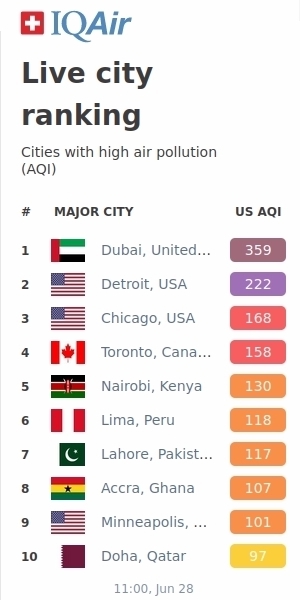 Iceberg Ahead
Can We Turn Back?
Iceberg Ahead
Can We Turn Back?
June 26, 2023
Music Association: Cher - If We Could Turn Back Time
This Week in Minnesota
Canadian Wildfires
June 15, 2023
Code red:
Smoke from western Canadian wildfires -and- eastern Canadian wildfires are both funneling to Minnesota, blotting out the sun and giving the sky an even tan.
Minnesota medical charts are automatically being updated as smokers.
Music Association: Sanford Townsend Band - Smoke From A Distant Fire
 Paint By (the) Numbers
Climate Change & 1.1% Growth
Paint By (the) Numbers
Climate Change & 1.1% Growth
April 28, 2023
Climate
change is not an afterthought. Numerically small changes in global
temperatures and carbon dioxide and methane are having extreme
consequences to the fragile life on Earth.
What fragile life? You.
You with your acceptable temperature range and your assumptions of clean air and water.
In
the 1960s United States, 42% of the population smoked. There were
smoking sections on planes and trains. Taxi cabs were entirely smoking
sections, but then you couldn't take a flight in a non-smoking section
without arriving in a smoking jacket. Today, only 1 in 9 Americans
smoke.
Clean air is more available than it used to be, except
for the summer forest fires. There didn't used to be regular summer
forest fires.
Headlines yesterday said the United States growth was 1.1% for the first quarter of 2023.
Woo
hoo! Wintertime growth of 1.1%?!? Just wait until summer! The forests
will have double-digit... what?!? GDP? Gosh darned pollution?
Gross
domestic product is the economic synopsis of a country's industrial
health, which has an adverse relationship to climate change. So the
headlines indicated the 1.1% US GDP was bad for the economy, due to slower growth. But is it
good for life on Earth?
Some industries are making wind
turbines, solar panels, electric vehicles, and carbon sequestering
devices. Those are good for life on Earth, right?
Define good.
Not bad. Coal power plants are bad. Cement production is bad. Strip mining is bad.
Wind turbines and solar panels are good but have cement bases which are bad.
Using less power would be good.
What
if homes were wrapped in mineral wool batting to insulate attics and
exterior walls? Mineral wool batting is strong insulation. And unlike
flammable rigid or spray-in foam, mineral wool batting can withstand
temperatures up to 2150°F. Would that be good?
Yes, using less power due to better insulation would be good. That could be growth in a good direction.
Music Association: Steve Miller - Joker Smoker
 Another Train Tanked
Ethanol & Corn Syrup
Another Train Tanked
Ethanol & Corn Syrup
March 30, 2023
 A BNSF
train with tankers of ethanol and corn syrup derailed in the small town
of Raymond, Minnesota at 1am. No injuries were reported. Some of the
800 residents were evacuated to a school and a church in the smaller
town of Prinsburg, Minnesota before being allowed back to Raymond.
A BNSF
train with tankers of ethanol and corn syrup derailed in the small town
of Raymond, Minnesota at 1am. No injuries were reported. Some of the
800 residents were evacuated to a school and a church in the smaller
town of Prinsburg, Minnesota before being allowed back to Raymond.
Music Assocation: Men Without Hats - Safety Dance
 Kissimmee
Plastic Pots Pollution
Kissimmee
Plastic Pots Pollution
February 18, 2023
On February 16, 2023 at 2am eastern time, a fire started by the back fence of a nursery supply company, 13 miles south of Disney World.
The fire burned nearly five acres of two-gallon plastic pots in Kissimmee, Florida.
Florida public health officials with straight faces told Fox35Orlando that
plastic pots burning do not create toxic smoke or ash. "These pots are
burning into soot, just carbon, and carbon monoxide, a small amount
that dissipates in the air, carbon dioxide and water. Nothing exotic.
No cyanide, like you can get in some fires. No exotic chemicals like
you can get in some fires," said Dr. Todd Husty, a public health
official.
Florida is saying it is just as messed up as Ohio.
Music Association: Anna Nalick - 2am Breathe
Oh East Palestine
Norfolk Southern Railroad Derailment Pollution
February 18, 2023
On February 3, 2023 at 8:54pm eastern time, 38 train cars of a nearly two-mile long Norfolk Southern 32N train derailed and caught fire at the east end of East Palestine on the east side of Ohio. The 153-car* freight train burned tanks of vinyl chloride (a known carcinogen), butyl acrylate**, ethylhexyl acrylate,
ethylene glycol monobutyl ether, isobutylene, combustible liquids, and
benzene residue. The mangled and charred mass of tankers, boxcars, and 100 foot tall
fires were still burning February 5th with winds blowing the dark
blue-gray smoke plumes east into nearby Pennsylvania as well as West
Virginia, New York, and beyond.
All 14 freight cars of vinyl chloride derailed and were exposed to the fire. Vinyl chloride
is used to make plastic and is shipped as a chilled liquid but quickly
turns into an explosive gas at normal outdoor temperatures.
On
February 5th, the decision was made to purposefully vent liquid vinyl
chloride and set it ablaze. The newly set fire produced a towering,
pewter-colored column of smoke.
Residents reported sudden headaches and nausea. They reported dead fish in streams and dead chickens in backyard coops. A resident said the air smelled like nail polish remover and burning tires.
A
chemical plume of butyl acrylate flowed into the Ohio River and was
flowing downstream toward Cincinnati. The Ohio River flows through
seven states until it flows into the Mississippi River which flows
through five more states before emptying into the Gulf of Mexico. The
East Palestine discolored drinking water was still safe, according to EPA officials.
On February 8th, a reporter was arrested and held for five hours for trying to cover the East Palestine derailment, trespassing at a two-hour-delayed press conference.
Between
2008 and 2019 train lengths increased by 25 percent. There are now
freight trains stretching more than three miles, often driven by just
two people. Writing an opinion piece for the Washington Post, Eugene Robinson said, “Basic
principles of physics would indicate that the sheer mass of such a
long, heavy train would make any derailment more violent than that of a
shorter, lighter train. A Norfolk Southern spokesperson, speaking to
CBS, defended the 'uniform' weight distribution of the train and the
fact that it included a mid-train locomotive, 'which helps manage the
dynamic forces.' No amount of word salad can repeal Isaac
Newton’s second law of motion, F=ma. Force equals mass times
acceleration.”
Federal officials found 36 percent more hazardous material violations on trains over the past five years compared to the five years prior.
Consolidation
has left the nation with only seven major freight railroad companies,
and six of them — including Norfolk Southern — have adopted
a profit-boosting, cost-cutting strategy called
“precision-scheduled railroading,” or PSR. According to a Government Accountability Office report (pdf)
issued in December 2022, PSR involves reductions in staff, longer
trains and reductions in some key assets such as locomotives. According
to the report, “the overall number of staff among the seven
largest freight railroads … decreased by about 28 percent from
2011 through 2021” and “all seven railroads said they have
increased the length of trains in recent years.”
Better brakes are an important safety measure. Electronically controlled pneumatic
(ECP) brakes create braking redundancy and allow trains to apply brakes
to all of their cars simultaneously. When a conductor slams the brakes,
the cars don’t all run into each other. In a report last year, the FRA
said that these brakes “improve both safety and braking
performance of trains” but that train companies have been
reluctant to invest in them due to cost.
The Obama administration created a requirement for ECP brakes at least on trains hauling flammable materials, but Trump revoked the requirement in 2018.
Music Associations: The Hollies - The Air That I Breathe
& Britney Spears - Toxic
*
The 18,000 ton Norfolk Southern freight train had 141 loaded freight
cars, 9 empty cars, and 3 locomotives to pull the chemicals from
Madison, Illinois to Conway, Pennsylvania by way of Toledo, Ohio.
** The freight train had 20 tankers of butyl acrylate and 11 of them derailed.
.
Paint By (the) Numbers
Plein Air Pollution
February 1, 2023
Impressionist painter Claude Monet was in London to capture the essence of the city at the end of the 19th century. “I
am working very hard,” he wrote to his wife, Camille Doncieux, on
March 4, 1900, “although this morning I really thought the
weather had changed completely. When I got up, I was terrified to see
that there was no fog, not even a wisp of mist. I was prostrate and
could just see all my paintings done for, but gradually the fires were
lit and the smoke and haze came back.”
Studying
the angles of Monet's paintings across the Thames River from the Savoy
Hotel, art historians determined Monet painted from rooms 510, 511, 610, and 611.
(Technically, Monet was painting from the balconies of those rooms. The
balconies were later removed.) Art historians have also studied the sun's positions
in the 19 known paintings of the Houses of Parliament by Monet to
determine dates and times of day that the suns were painted.
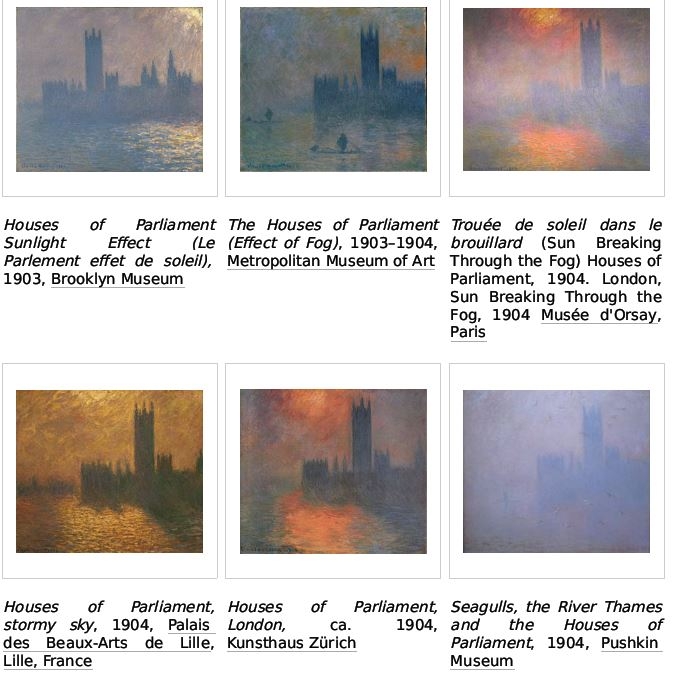
A more recent study
concluded that the haze Monet was painting was industrial
pollution (obviously) and that over time his paintings revealed
increased air pollution.
In 1905, Dr. Henry Antoine Des Voeux
delivered a paper to the Public Health Congress in London, England.
Noting there was a health threat inherent in urban living, “something produced in great cities that was not found in the country,” according to a London newspaper, Des Voeux noted the pervasive presence of a “smokey fog, or what was known as 'smog.'”
That smog, the London
Fog, has decreased over the past 100 plus years. The coal soot and
other air pollution have improved in London but not other cities.
Here are World Air Quality Project 2022 air pollution charts from London, Dehli, Beijing, Los Angeles, and Minneapolis.

dark, dark red = dangerous?
dark red = hazardous
purple = very unhealthy
red = unhealthy
orange = unhealthy for sensitive groups
yellow = moderate
green = good
blue = great?
numbers = numbers of days in that category
The Minnesota Pollution Control Agency released a report showing the decline in Minnesota's greenhouse gas emissions from 2005 to 2020.
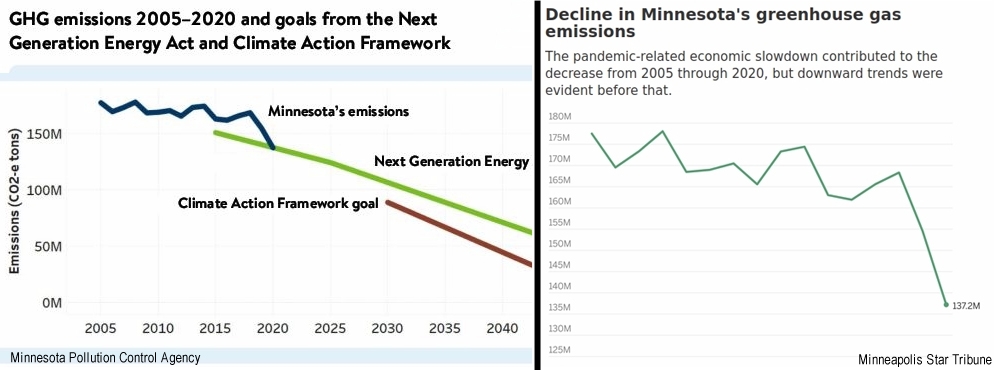
The
charts above show the Minnesota greenhouse gas emissions from two
sources. The chart on the left is from the Pollution Control Agency
(PCA), and the chart on the right is from the Minneapolis Star Tribune
newspaper, based on the PCA chart on the left. The chart on the right
looks better than the chart on the left because the scale of emissions
does not start at zero. It is misleading.
Music Associations: Bill Withers - Ain't No Sunshine
& Dire Straits - Industrial Disease
Carbon
Dioxide Just Passed 410 ppm
April
24, 2017
Carbon dioxide in the atmosphere
has now exceeded 410 parts per million (ppm), as measured by the Mauna
Loa Observatory in Hawaii (410.28
ppm on Tuesday, April 18, 2017).
Carbon
dioxide was recorded at 280 ppm at the Mauna Loa Observatory back in
1958.
It passed 400 ppm in 2013.
From
Climate
Central:
“The
rate of increase will go down when emissions decrease,”
Pieter Tans, an atmospheric scientist at the National Oceanic and
Atmospheric Administration, said. “But carbon dioxide will
still be going up, albeit more slowly. Only when emissions are cut in
half will atmospheric carbon dioxide level off initially.”
Even
when concentrations of carbon dioxide level off, the impacts of climate
change will extend centuries into the future. The planet has already
warmed 1.8°F (1°C), including a run of 627 months in a
row of above-normal heat. Sea levels have risen about a foot and oceans
have acidified. Extreme heat has become more common.
All
of these impacts will last longer and intensify into the future even if
we cut carbon emissions. But we face a choice of just how intense they
become based on when we stop polluting the atmosphere.
Also
last week on April 21st, Britain had its first coal-free
electricity day since the industrial revolution.
Music Association: AC/DC -
Highway To Hell
 730,000
Elephants Killed From “Protected Areas”
730,000
Elephants Killed From “Protected Areas”
Elephant
Tusks Are Not Trophies
April
21, 2017

 According
to a recent report,
730,000
elephants have been killed by poachers in 73
“protected” areas in 21 African countries. Elephant
numbers are down by 75%. Every organization, every country
that has failed to protect elephants should be more
than ashamed.
According
to a recent report,
730,000
elephants have been killed by poachers in 73
“protected” areas in 21 African countries. Elephant
numbers are down by 75%. Every organization, every country
that has failed to protect elephants should be more
than ashamed.
China
says it will ban its domestic ivory trade, starting now.
Conservationists doubt
China's resolve. And speaking of conservationists, is the World
Wildlife Fund complicit?
Elephants
are intelligent tool-using animals, long-famous for their memory,
traveling with cognitive maps and having respect for the dead and
dying.
Elephants can live 70 years in the
wild, if people don't kill them for their tusks.
Music Association: Fleetwood Mac
- Tusk
Free Comic Book: Wild
For Life by Diego Otero & Lisa Rolls
Concert Review
Steven
Wright
April 7, 2017
Saw
Steven Wright at the Ordway in St. Paul tonight. Sustained laughter
past the point of pain.
He
started by saying that all search parties are surprise parties. Then he
led the audience on a search and surprise party through the curious,
the bizarre, and the spots where Wright is long gone
and the audience said
WHOA and stopped in
their tracks.
Wearing
someone else's clothes because he took the first suitcase off the
baggage carousel, Wright twisted and turned around the stage, trailed
by his microphone cord, as he twisted and turned his way through
conjoined terms and ponderings from long ago and last month.
The
reason I bring him up is he touched upon climate change when he said he
thought global warming was created by the end of the cold war.
Looking
at the chart below titled
Energy
Consumption In The United States, I think he might be on
to something. But then again, I'm recovering from hyperventilating.

Music Association: Pink Floyd -
Dark Side of the Moon
“If worst
comes to worst... we're screwed.” -
Steven Wright
 Permafrost: No Longer Permanent,
No Longer Frost
The
Escalation of Climate Change
Permafrost: No Longer Permanent,
No Longer Frost
The
Escalation of Climate Change
April
6, 2017
Climate
change can be divided into two sources: natural and anthropogenic,
which means originating from the activities of people, everything I've
been talking about in the earlier posts.

When
you look at the chart of climate change differentiating between natural
and anthropogenic sources, the natural sources have been zigzagging in
the same range while the anthropogenic sources have sent average
temperatures up. For the past few years,
each year has been
hotter (on average) than the previous year.
In
December 2016, methane watchers saw some extreme hikes in atmospheric
methane, starting in 2007 but with big increases in 2014 and
2015. Concentrations of methane in the atmosphere over those
two
years rose by more than 20 parts per billion, bringing the total to
1,830ppb.
The anthropogenic climate change is
causing a natural melting of the permafrost, breaking every rule of
permafrost.
Permafrost Rules
1. Permanent
2. Frozen
Methane
has been held back by the permafrost. And again, methane is much worse
than carbon dioxide as a greenhouse gas. “The radiative
forcing
of methane is
72
times that of carbon
dioxide (averaged over 20 years) or 25 times that of carbon
dioxide
(averaged over 100 years). Carbon dioxide receives the lion's share of
attention over greenhouse gases because it is released in much
larger
amounts.”
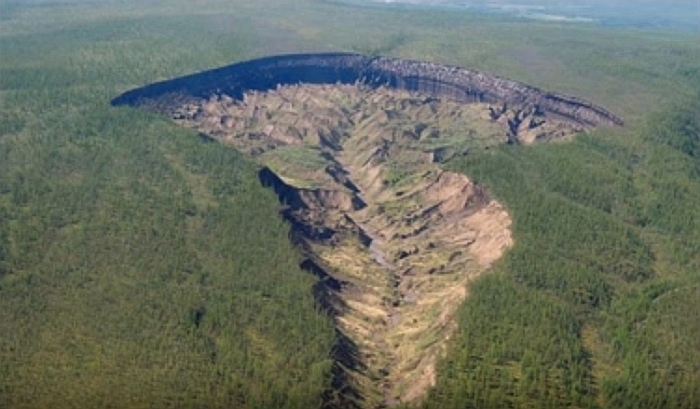 “Larger
amounts?!?” nature asks. “I'll
show you larger amounts.”
“Larger
amounts?!?” nature asks. “I'll
show you larger amounts.”
More
carbon --
1.7 to 2
trillion tons -- is in the
permafrost than humans have released into the atmosphere --
350 billion tons
-- since the beginning of the industrial age. Permafrost covers 24% of
the land in the northern hemisphere. About 70% of Russia's landmass is
permafrost.
Craters have been appearing in areas of
melted permafrost. The largest so far might be the
Batagai
crater
northeast from Yakutsk. It's an expanding depression last measured at
one kilometer long and 100 meters (328 feet) deep. Here's an
aerial
view and an
inside
view. Here's a view of some new
Canadian
depressions near Hudson Bay.
Last month
the
Siberian
Times reported, 7,000 underground bubbles of methane
“were poised to
'explode' in Arctic.”
Music Association: Modern
English - Melt With You
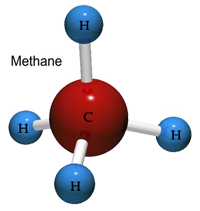
 Multiplication and Exponentiation
Multiplication and Exponentiation
Climate
Solutions
March 31, 2017
A
cigarette butt is flicked out a car window. One cigarette butt might
not make a bit of difference, but if you walk along the roadside, you
see there isn't just one cigarette butt. There are layers of cigarette
butts.
Multiplication
is at the core of climate change. One chunk of coal or one car is not
going to make any difference to the world. The problem is that all the
coal and oil, all the factories and power plants and cars get
multiplied.
People want their meat, electricity,
landfills, and
to embalm their dearly departed. And all of that gets multiplied by
many billion people.
Multiplication is the problem.
Multiplication
is also the hope of climate change. It is our only hope.
There
are big things and little things to be done. Do what you can if it
matters to you.
Climate Change Solutions
1. Convert Or
Replace Coal Power Plants
Talk
with companies and state lawmakers about converting or replacing coal power
plants to natural gas power plants. Or even better,
renewable power (solar, wind, geothermal, biomass).
Natural
gas combustion produces about 45% less carbon dioxide (CO2)
emissions than coal, emits lower levels of nitrogen oxides and
particulates, and produces virtually no sulfur dioxide and mercury
emissions. That's the good news. The bad news is that natural gas
combustion is burning a fossil fuel, which emits CO2,
unlike renewables or nuclear energy. Natural gas is mostly methane (CH4), a
greenhouse gas far more potent than carbon dioxide when released into
the atmosphere.
“Methane
in the atmosphere is eventually oxidized, producing carbon dioxide and
water. In the atmosphere methane has a half life of seven years (if no
methane was added, then every seven years, the amount of methane would
halve). The radiative forcing of methane is 72
times that of carbon
dioxide (averaged over 20 years) or 25 times that of carbon
dioxide
(averaged over 100 years). Carbon dioxide receives the lion's share of
attention over greenhouse gases because it is released in much larger
amounts. It is inevitable in using natural gas on a large scale that
some of it will leak into the atmosphere. Current USEPA estimates place
global leakage of methane at 3
trillion cubic feet annually, or 3.2% of
global production. Direct emissions of methane represented 14.3% of all
global anthropogenic greenhouse gas emissions in 2004.” [sourcewatch]
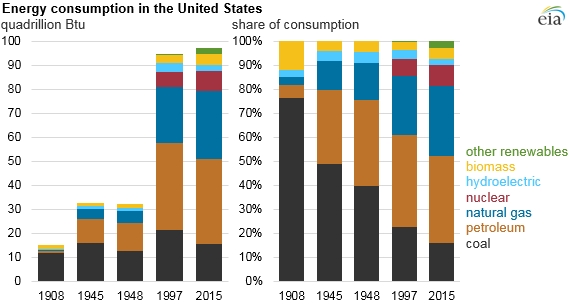
Coal
power plants are part of electric utilities and industrial
manufacturing. U.S. total energy consumption from 1908 to 2015 in
quadrillion Btu's is charted on the right and broken out by type of
fuel. From the looks of it, about 15 quadrillion Btu's of coal was used
in 1945 and
2015.
| Btu
- a British thermal unit. The power of burning one match or burning
about 252 calories or raising the temperature of a pound of water by
one degree F. One kilowatt hour (kWh) is equal to 3,413.94
British
thermal units or about 3,414 matches. A quadrillion is a thousand
trillion (a million million) or a one with 15 zeros. |
Here
is a map showing new U.S. power plants
to come online from February 2017 to January 2018. The four large
nuclear reactors in Georgia and South Carolina will have issues due to
this week's bankruptcy declaration by Toshiba-Westinghouse.
The top
ten coal consumers in the U.S. (2015) are:
American Crystal Sugar Co
(MN, ND)
Archer
Daniels Midland
(IA,
IL, MN, NE)
Carmeuse Lime Stone
Inc
(AL, IN, KY, MI, OH,
PA, TN,
WI)
Cemex Inc
(AL, CA,
CO, FL, GA, KY, OH,
TN, TX)
Dakota Gasification Company
(ND)
Eastman Chemical
Company
(TN)
Georgia-Pacific Consumer Products
(AL, GA,
OK, WI)
Holcim
(US) Inc
(AL, CO,
MD, MO, MT, OK, SC,
TX, UT)
Mittal
Steel USA
(IN)
NewPage
Corporation
(MD, MI, WI)
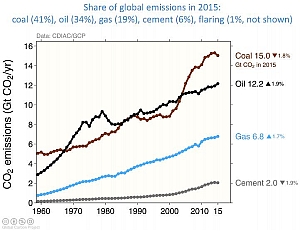
Renewable
power (US map)
is increasing
and has advantages over fossil fuels by emitting no greenhouse gases or
in the case of biomass (plant material) no new greenhouse
gases. Nuclear power and hydro electric require heavy infrastructure
built with tons of cement
which releases tons
of greenhouse gases.
Solar, wind, and geothermal powers release no greenhouse gases and
require far less cement. When looking at solar or wind or geothermal
energy, location matters. Google has a roof-by-roof sunlight map, Sun
Roof, to estimate the solar potential of your
community. Here is more information about solar
affordability by the Union of Concerned Scientists.
2. Buy Renewable
Energy
The
sun hits the Earth with 100,000 terawatts of solar energy. Most of that
energy bounces off the atmosphere. The world uses 17 terawatts of
energy. Solar energy has potential.
Use
the Sun
Roof and solar
affordability links as part of your research into the costs
of your very own solar power. Here is a wind
map of the United States. I'm a big fan of wind.
But not
everyone can afford to buy their own renewable power
generators.
Some or all of residential or
business power can be voluntarily purchased through special
renewable energy programs and Renewable
Energy Certificates (RECs). Many power companies
sell solar power or wind power (like Xcel Energy's Windsource™)
or cow power (like Green Mountain's Cow
Power™). Here's a list of the Green-E
certified renewable providers.
(Many of
those companies listed are not generators of renewable power, so much
as sellers of RECs.)

3. Use Less Energy
Maybe
it is the simplest or the toughest task to make a dent (as a community)
against climate change.
Set
your water heater to the energy-efficient setting. Wash most clothes in
cold water and try to line dry, instead of drying using a clothes
dryer.
Kill
A Watt®
is a small gadget for $30 that tells how much power different devices
use when on or when off. It's plugged in between the device and the
wall outlet. It's a good
device to learn from, short term. It would be a great tool to
loan
in a tool loaning program. Basically, it teaches people to use power
cords with a switch to
switch off electronics that would otherwise continue to leech energy.
Use
sunlight to read, otherwise use LED light bulbs. Listen to
newly purchased bulbs to make sure
they don't hum. Read the fine print for whether the bulbs are
dimmable and whether they are designed for enclosed fixtures. Compact
fluorescent bulbs use mercury, can generate heat,
and are more likely (my personal experience) to make noise.
The
carbon
footprint of many things have been studied. Someone did a
study measuring the energy used by copying multiple people into an email
message.
Reducing the number of copies of emails, reduces energy used.
Downloading a 1mb file takes about the same amount of energy as a
charcoal briquette.
4. Have Fewer
Children Or No Children Or Delay Having Children
This
is the most forbidden subject of climate change. Climate change is a
result
of greenhouse gas emissions from the burning of fossil fuels and cement
manufacturing by humans. The more people there are, the more greenhouse
gases. As of March 2017, the world population is estimated at 7.49
billion. The world population is expected to double
in 61 years. When Yitta
Schwartz died in 2010 at 93 years old, she had 2,000
descendants, illustrating the power
of exponentiation.
Climate change is all
about multiplication. Population is all about exponentiation, raising a
number to a power.
Not
that everyone is equal. While China has the most greenhouse gas
emissions of any country (29%), the U.S. has the most greenhouse gases
per capita (16.8
metric tons of CO2 per person
in 2015). The carbon footprint of Americans is larger than
any other humans.
According
to a 2009 Oregon State University study, each U.S. child ultimately
adds about 9,441
metric tons of carbon dioxide
to the carbon
legacy of an average parent, about 5.7 times the lifetime emissions for
which an average person is responsible. The carbon impact of a U.S.
child, along with all of its descendants, is more than 160 times the
impact of a child born in Bangladesh.
As part of
Population Matters, David
Attenborough said, “The growth in human numbers is
frightening. I've seen wildlife under
mounting human pressure all over the world, and it's not just from
human economy or technology. Behind every threat is the frightening
explosion in human numbers. I've never seen a problem that wouldn't be
easier to solve with fewer people – or harder, and ultimately
impossible, with more.” A more detailed
discussion with David Attenborough is in the video, People
and Planet - 2011 RSA President's Lecture.
This
is not about making anyone feel guilty for having kids. Multiplication
is the problem and
the solution. The trick is being more of the solution and less of the
problem. To paraphrase Steve
Hofstetter, anyone can have kids; the trick is to raise good adults.
Contraceptives are free in 46 countries but not the United States.
5. Eat Less Meat
 This
is the second most forbidden subject of climate change. Livestock
are among the top most significant contributors to the most serious
environmental problems (water scarcity, deforestation, habitat loss,
soil erosion, climate change...) from local to global, according to the
2006 United Nations FAO report titled, Livestock's
Long Shadow (wiki,
ftp-pdf).
Livestock are responsible for 18%
or as much as 51%
of greenhouse gas emissions, due to:
This
is the second most forbidden subject of climate change. Livestock
are among the top most significant contributors to the most serious
environmental problems (water scarcity, deforestation, habitat loss,
soil erosion, climate change...) from local to global, according to the
2006 United Nations FAO report titled, Livestock's
Long Shadow (wiki,
ftp-pdf).
Livestock are responsible for 18%
or as much as 51%
of greenhouse gas emissions, due to:
• Deforestation and land use change - 2.5 Gigaton
carbon dioxide
equivalent; including forest and other natural vegetation replaced by
pasture and feed crop in the neotropics (CO2)
and carbon release from soils such as pasture and arable land dedicated
to feed production (CO2)
• Feed production (except carbon released from
soil): 0.4 Gigaton CO2 equivalent,
including fossil fuel used in manufacturing chemical fertilizer for
feed crops (CO2) and chemical fertilizer
application on feed crops and leguminous feed crop (N2O,
NH3)
•
Animal production: 1.9 Gigaton CO2
equivalent, including enteric fermentation from ruminants (CH4)
and on-farm fossil fuel use (CO2)
• Manure management: 2.2 Gigaton CO2
equivalent, mainly through manure storage, application and deposition
(CH4, N2O, NH3)
• Processing and
international transport: 0.03 Gigaton CO2
equivalent
Livestock require food, water, and
grazing land. Livestock, especially cattle, produce methane (CH4)
as part of their digestion. This process is called enteric
fermentation, and it represents almost one
third of the emissions from the agriculture sector. Again,
the radiative forcing of methane is 72
times that of carbon
dioxide (averaged over 20 years) or 25 times that of carbon
dioxide
(averaged over 100 years).
Since the 2006 report,
the United Nations FAO has yielded
to pressure from the meat industry on climate change and
announced a partnership with them in 2012.
A manure
emissions and management report
studied methane and nitrate emissions by continent, by livestock, and
by management technique. The only thing left is to thumb-through a Meat
AtlasMeat the Truth
(youtube).
By
comparison, here is the carbon
footprint of a banana.
6. Less Air Travel or
No Air Travel
Aviation
causes up
to 9% of greenhouse gas emissions,
and emissions are rising fast. In 1990, there were 1 billion air
passengers. In 2005, there were 2 billion air passengers. In 2015,
there were 3.5
billion air passengers (chart). A
plane with 300 passengers traveling from Paris to New York emits
approximately 100
tons of carbon dioxide, or as much as emissions from
22 cars in a year. And because the emissions happen higher up in the
atmosphere, the impact on global warming is greater than emissions on
the ground.
At
all levels of flight, planes emit carbon dioxide, carbon monoxide,
nitrogen oxides, sulfur oxides (0.05% by weight in jet fuel), unburned
hydrocarbons (UHC), water vapor, soot and other particles. In addition
to greenhouse gases, planes produce contrails, short for condensation trails.
Contrails “are line-shaped clouds produced by aircraft engine
exhaust,
typically at aircraft cruise altitudes several miles above the Earth's
surface.” Contrails increase the cloudiness of the
atmosphere,
for minutes or hours, adding to the greenhouse effect beyond the
greenhouse gases emitted.
A 2014 Los Angeles study
of air pollution 10km downwind from the international airport (LAX)
found four
times the air pollution (particulate
concentrations).
7. Less Cement
Cement
production causes approximately 5-8% of global human-made CO2
emissions. Half of the emissions come from removing CO2
from limestone in a kiln at 1450° C. The de-carbonation of
limestone emits
525kg CO2 per ton of clinker.
About 40% of the cement
production emissions come from burning fossil fuels to heat the kiln
(about 300-350kg CO2
per ton of cement). Roughly 10% comes
from electricity for raw materials and clinker grinding, and
cement finishing (typically 50kg CO2
per ton of cement) and transportation. [wbcsdcement.org] When they say infrastructure, what they usually mean is cement.
8. Compost &
Recycle
Globally only about 20% of
municipal solid waste is recycled and about 14%
is treated with energy recovery, while the rest is deposited
in open dump sites.
Organic wastes in landfills
release methane (CH4).
Landfill methane recovery waits until the landfill unit is full (with
methane emissions in the meantime), then the landfill is capped with
cement, valves, and tanks to capture methane and other greenhouse
gases. Methane recovery from landfill is cement intensive.
A
worm bin
is a microcosm of the landfill organic waste problem. Proper worm bin
management involves stirring or flipping the worm bin, because
methane is produced under highly anaerobic (without oxygen)
conditions. A 2004 study found that unaerated composting produced as
much as 24
times the amount of methane produced in aerated piles.
The
best way to aerate compost is small piles. It is better for households
to compost their own organic wastes than to send them to landfills.
Reduce what you receive by stopping junk mail. The Federal Trade Commission (FTC) has instructions on how to stop unsolicited mail, phone calls, or email. WikiHow also has instructions. RedPlum-SaveOn has an opt-out option. Stop pre-screened credit card and insurance offers by calling 1-888-5-OPT-OUT (1-888-567-8688) or visit www.optoutprescreen.com.
9. Stop
Deforestation, Plant Trees
One acre
of average U.S. forest sequesters
1.06 metric tons of carbon dioxide a year. That means forests breathe
in carbon dioxide and breathe out oxygen. In 1990, forests were 31.8%
of land worldwide. In 2015, forests
were 30.8%.
Deforestation accounts for 15%
of all global greenhouse gas emissions.
Nearly 300,000
square miles of Amazon rainforest has been destroyed in
Brazil since 1970. Just in 2016, over 3,000 square miles were
deforested, and Brazilian
President Temer has plans to
accelerate the degradation for mining and agriculture. Here is a map showing
where forests
have been lost.
Agriculture -- beef
cattle, soybeans, palm oil (details,
infographic,
pdf),
and wood products -- drives most
deforestation, about 80%
worldwide. The rest of deforestation is due to logging and paper
product production, mining (aluminum, gold, & copper),
subsistence
farming and fuel production, and roads and dams.
What
you can do:
and watch the documentary,
•
advocate to stop deforestation - support zero deforestation
•
plant trees and native plants
•
eat less meat (livestock are a main reason for deforestation)
•
buy recycled wood or paper products (and recycle)
•
support the rights of indigenous peoples
Forests
around the world have been home to Indigenous
peoples
for tens of thousands of years. When Indigenous peoples’
rights
to traditional lands and self-determination are respected, forests
stay standing.
Too often, corporations and governments overlook or intentionally
trample the rights of Indigenous peoples. The Waswanipi Cree of
Northern Quebec are fighting to keep the last wild forests on their
traditional land intact. The Munduruku people of the Amazon are
battling a proposed mega-dam that threatens rainforests, a river, and
their way of life.
Forest protecting non-profit
organizations start with high goals but become entangled with the motives
of fossil-fuel and deforesting companies. They stop seeing the
forests for the trees.
Skeptically support
forest-protecting organizations, mindful of partnerships with
Indigenous peoples:
Reducing
Emissions from Deforestation and forest Degradation (REDD) sounds good
but when you read into it, the carbon offsets (forests are not a
commodity), not defining what a forest is (plantations can be
forests?!?), and the kicking out indigenous people in order to log wood
and mine land is appalling.
The REDD often does the
exact opposite of protecting forests and preventing
climate change:
10. Advocate
Against Climate Change and Bad Climate Practices
Spread
the word about what people can do to help minimize the effects of
climate
change. Like I said at the start, it is about multiplication. Humanity
can make a difference.
You can make a difference,
if you really try.
Music Associationa: Sam Cooke -
Wonderful World & Alanis Morissette - Eight Easy Steps
 Apples and Oranges
Apples and Oranges
Climate
Change - Energy Utilities
March
25, 2017
Xcel Energy is the 12th largest gas and
electric producer in the United States by market
size,
with customers in Minnesota, Wisconsin, North and South Dakota,
Colorado, New Mexico, and Texas. They are the 8th largest U.S. energy
utility polluter with 56,506,228 metric tons of carbon dioxide
(CO2) equivalent emissions in 2014, according to
the Greenhouse
100 Polluters Index. That figure includes emissions they
produced, not emissions that were part of energy they purchased. Xcel's
CO2 emissions
have been dropping since 2007, dropped further in 2015, and is expected
to have reduced 30% by 2020 (with 2005 as a base year).
Xcel
has a program called Windsource™,
which allows business
and
residential
customers to buy wind-generated electricity in 100 kWh (kilowatt hour)
blocks or 100% of electricity for at least one year. The cost is $1 per
block for residential customers. The number of customers
utilizing Windsource™
was about 50,000 in 2015 and about 54,000 in 2016.
Since
I signed up for Windsource™,
I can say this Hopes and
Dreams website is created with wind.
I
recently wondered how other U.S. energy utilities compare to Xcel
Energy.
| Largest U.S. Energy Industries |
| Gas
and electric utilities - market
size (in $billions, 2016) |
Greenhouse
100 Polluters Index - CO2
equivalent metric tons (2014) |
1
Duke Energy
53.1
2 NextEra
Energy
52.8
3 Southern
Co.
45.3
4
Dominion Energy
43.2
5
Exelon
31.4
6 American
Electric
30.8
7
PG&E
28.2
8
PPL
24.7
9 PSEG Public Service
22.9
10 Edison
International 22.4
11
Consolidated Edison 21
12
Xcel Energy
19.8
13
WEC Energy Group 17.9
14
Eversource Energy
17.6
15 DTE Energy
15.4 |
1
Duke Energy
122,474,576
2
American Electric
121,098,420
3
Southern Co.
108,671,229
4
NRG Energy
100,224,829
5
Berkshire Hathaway
83,939,342
6
U.S. Government
74,687,012
7
Dynegy
61,183,427
8 Xcel Energy
56,506,228
9 FirstEnergy
56,050,031
10 PPL Corp.
52,174,283
11 Energy Future Holdings
51,929,011
12
Calpine Corp.
41,692,267
13 NextEra Energy
40,023,063
14
ExxonMobil
38,141,796
15 DTE
Energy
35,491,147 |
Comparing
these U.S. power utilities and other energy producers is like comparing
apples to oranges. And when you bite into it, there are some really bad
apples in here.
Take Duke Energy.
It's not just the largest power utility conglomerate in the U.S. It's
the world's largest. And Duke
is the top U.S. greenhouse gas polluter with 122,474,576
metric tons annually of CO2
and CO2 equivalent greenhouse gases.
Its website has little to say about the environment
or climate
change. More information about Duke's environmental
record is available at Wikipedia.
Bad apple.
NextEra Energy
is #2 in market size (U.S. & worldwide) but is down at #13 on
the pollution index. NextEra operates Florida Power & Light and
dots the United States and Canada with 15% of all U.S. wind capacity
and 9% of all U.S. solar capacity. It is the largest wind and solar
supplier in the world. Some of its wind farms in southern Minnesota may
supply some wind power to Xcel customers. One of the few complaints
against NextEra is that it has not paid much by way of U.S. corporate
taxes because it invests so much money in renewable energy and can take
advantage of renewable energy tax credits. Good apple.
Southern
Company burns “21st century clean coal”
which is ordinary coal with a rosier name than pollution rock.
Southern is #3 for pollution and size. Bad apple.
Dominion
Energy is improving. Dominion was responsible
for releasing
1,110,703 pounds of gastrointestinal or liver toxicant emissions,
1,440,000 pounds of musculoskeletal toxicant
emissions, 1,489,763
pounds of suspected respiratory toxicant emissions, and 1,478,383
pounds of suspected skin or sense organ toxicant emissions in 2002. In
2005, Dominion was ranked 19th with an air pollution toxic score of
117,712 (pounds released x toxicity x population exposure) by the Political
Economy Research Institute. In 2008, Dominion was ranked
27th, in 2010 Dominion was ranked 51st, and in 2016 Dominion no longer
made the
top 100 of U.S. corporations emitting airborne pollutants.
For the Greenhouse 100 Polluters Index, Dominion was ranked 16th. Good
apple?
Exelon
is the largest electric utility by revenue with mostly nuclear power.
It generates over 19,000 megawatts in nuclear power with full or
majority ownership of 17 nuclear reactors in 10 nuclear power plants.
It generates 10,000 megawatts of natural gas & oil, and about
6,000
megawatts of other energy (hydro, solar, landfill gas, & wind).
Exelon has operations in 47 states, the District of Columbia, and
Canada. Exelon is also not on the list of Greenhouse Polluters Index.
Nuclear power has a cleaner, safer potential (according to PBS Nova The Nuclear Option
from last January)
than today's nuclear power plants. In the greenhouse gas criteria,
nuclear power is clean. Goodish apple.
American
Electric
is the 5th largest power utility by size but #2 on the Greenhouse
Polluters Index. In 2012, they tried to turn back renewable energy
legislation as part of a clean
coal coalitioncoalition).
Today, their website
brags: “AEP’s
carbon dioxide emissions (CO2)
have been reduced 39 percent from 2000 levels, and we will continue to
reduce carbon dioxide emissions as we transition to more natural gas
and renewable resources in the future. AEP’s CO2 emissions
significantly decreased between 2014 and 2015, largely due to low
natural gas prices, slowing load growth, and coal unit retirements.
AEP’s CO2
emissions were approximately 123 million metric tons in 2014; they were
approximately 102 million metric tons in 2015. This represents a 16.5
percent decrease compared with 2014 and an approximate 39 percent
reduction compared with our 2000 CO2 emissions of about 167 million
metric tons.” Retiring coal units is a step in
the right direction.
The fourth largest greenhouse
gas polluter, NRG
Energy, plans to “cut CO2 and CO2 equivalent emissions 50% by
2030 and 90% by 2050 from a 2014 baseline.”
David Crane, NRG Energy’s chief executive, said in
2014, “The
power industry is the biggest part of the problem of greenhouse gas
emissions, but it has the potential to be an even bigger part of the
solution.”
One of
the biggest impacts anyone
can make upon climate change is to help encourage the power companies
(and other industries) of all sizes to cut CO2
emissions as
quickly as possible. Energy customers should seek programs like Xcel
Energy's Windsource™
program. As a community, we can make a
difference.
(I get it,
Music Associations: Bad Company
- Bad Company & Kansas - Dust In The Wind
 By the Numbers
By the Numbers
Climate
Change
March 21, 2017
Since
1751, approximately 374
billion metric tons of carbon have been
released to the atmosphere from the consumption of fossil fuels and
cement production. Half of these fossil-fuel CO2
emissions have occurred since the mid 1980s. The 2011 global
fossil-fuel carbon emission estimate, 9.449 billion metric tons of
carbon, represents an all-time high and a 3.4% increase over 2010
emissions. [
Oak
Ridge National Laboratory]
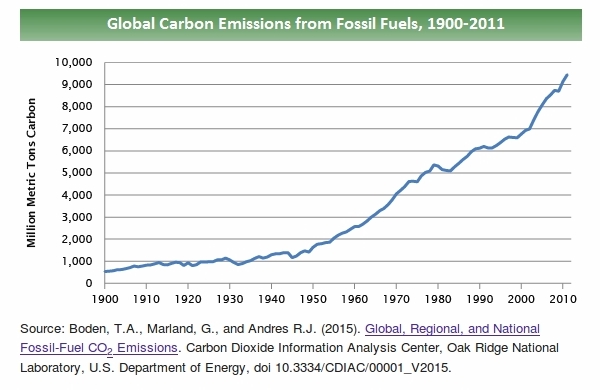
Greenhouse Gas Emissions
64%
= carbon dioxide (CO2) from fossil fuels,
cement, & other industrial processes
10%
= carbon dioxide (CO2) from
deforestation
18% = methane (CH4) from
livestock, landfills, fossil fuels (fracking), & deforestation
6% = nitrous oxide (N2O) from fertilizer and
manure, runoff, fossil fuel & biomass burning, &
industrial processes
2%
= fluorinated gases: hydrofluorocarbons (HFCs),
perfluorocarbons (PFCs), sulfur hexafluoride (SF6),
chlorofluorocarbons (CFCs), & hydrochlorofluorocarbons (HCFCs) [
Trends
in Carbon Emissions, EC Joint Research]
Burning
fossil fuels is the #1 cause of climate change, and of the fossil
fuels, coal is the most polluting.
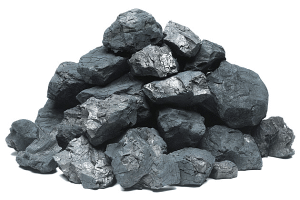
Blowing
Smoke - Clean Coal
Burning
coal produces noxious gases of nitrous oxides, carbon monoxide, sulfur
dioxide, mercury, particulates and ash. It's nasty to breathe and nasty
in the atmosphere. At first people wanted less particulates and ash in
the air so filters were added to power plants. After people noticed the
effects of acid rain, the 1990 amendment to the U.S. Clean Air Act
caused coal power plants to add limestone scrubbers to catch sulfur
dioxide. The U.S. EPA issued mercury limiting regulations in
2011. Incrementally coal burning at U.S. power plants became
cleaner than it had been but it is still not clean. All U.S. coal
burning power plants release carbon dioxide into the atmosphere, except
one. On January 10, 2017, a coal power plant in Houston became
operational that pumps its carbon dioxide into an oil well to help pump
out oil. Maybe the oil comes out fizzy, I don't know.
Coal
mining is biologically and environmentally destructive.
Burning coal results in fly ash, bottom ash, and slag waste
in addition to greenhouse gases.
Blowing
Smoke - Sustainable Cement
The
cement industry is following the lead of the coal industry to clean up
its appearance. Cement industry associations talk about a sustainable
cement, which defies either the laws of chemistry or
economics.
Cement production causes approximately
5-8% of global human-made CO2
emissions. Half of the emissions come from removing CO2
from limestone in a kiln at 1450° C. About 40% of the cement
production emissions come from burning fossil fuels to heat the kiln.
Roughly 10% comes from electricity and transportation. [wbcsdcement.org]
Blowing
Smoke - the false solution of REDD
Reducing
Emissions from Deforestation and forest Degradation (REDD) sounds good
but when you read into it, the carbon offsets (forests are not a
commodity), not defining what a forest is (plantations can be
forests?!?), and the kicking out indigenous people in order to log wood
and mine land is appalling.
The REDD often does the
exact opposite of protecting forests and preventing
climate change.
Read more: REDD
Monitor, REDD
Gamble, WWF
Scandal in Tanzania, and Ten
of the worst REDD-type projects.
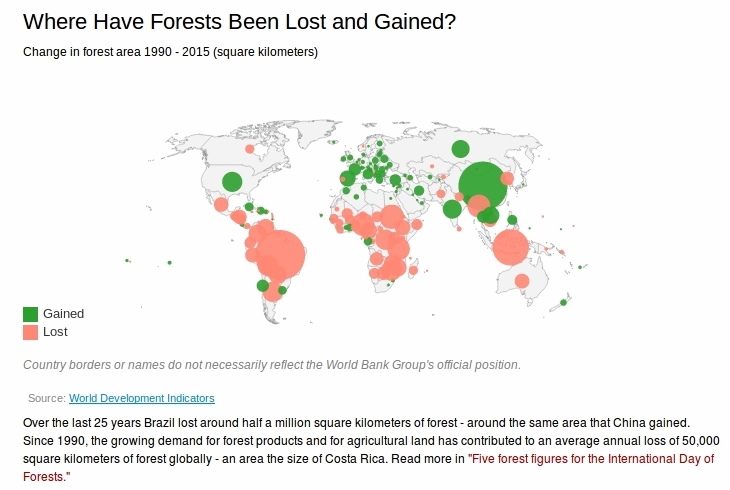
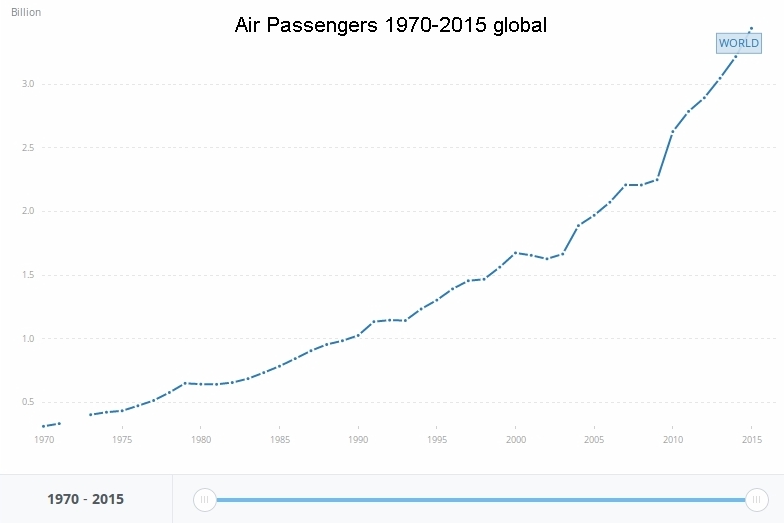
Blowing
Smoke - Plane Facts of Aviation
Greenhouse
gas emissions from aviation currently represent 5%
of worldwide emissions – making aviation the world’s
seventh largest emitter
- a number anticipated to rise exponentially in the coming decades as
more and more people choose to fly to their destinations. Today, an
aircraft with 300 passengers traveling from Paris to New York emits
approximately 100 tons of carbon dioxide, or as much as emissions from
22 cars in a year. And because the emissions happen higher up in the
atmosphere, the impact on global warming is greater than emissions on
the ground. Contrails of jet exhaust, carbon monoxide, carbon dioxide,
sulfur, hydrocarbons, black carbon, nitrogen oxides, and
water vapor add to aviation's impact on climate change.
One
of
aviation's answers to carbon emissions is to suggest pilots might take
routes to decrease the greenhouse effects of air travel. Or purposefully create
contrails.
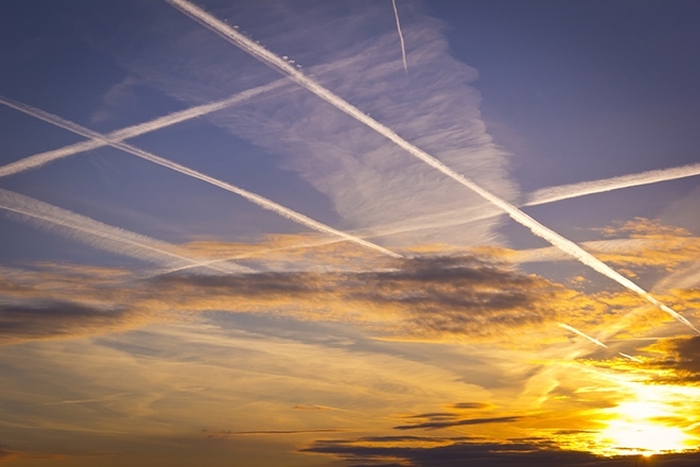
Music Associations: The Hollies
- The Air That I Breathe & Anna Nalick - Breathe
 Beware the Ides of March
Beware the Ides of March
Climate
Change
March 15, 2017
First,
2014 was globally the warmest
year on record.
Then, 2015 beat 2014, becoming
the warmest year on record.
And then, 2016 beat 2015 which had
beat 2014, becoming the warmest year on record.
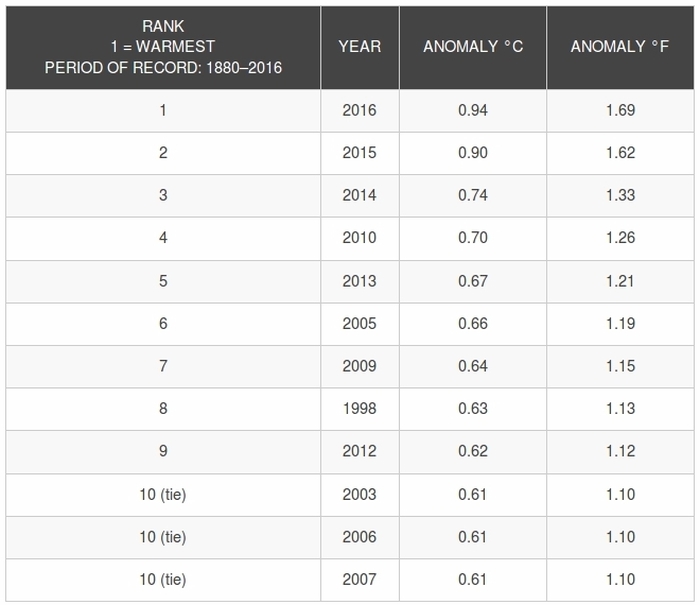
This
has got to stop.
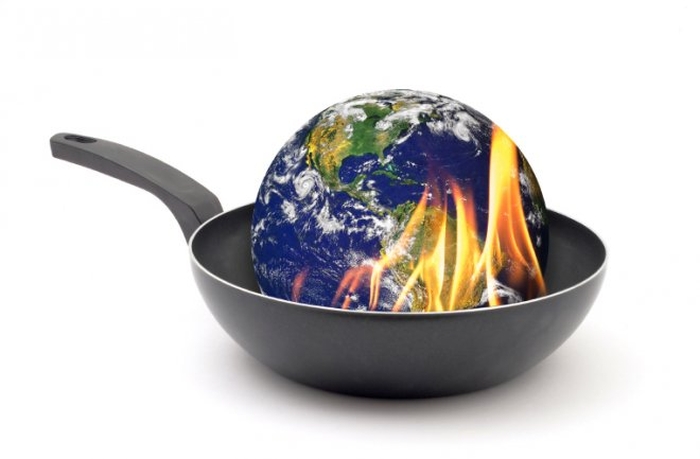
Music Association: Little River
Band - (Time for a) Cool Change
Pffft
Winter...
March 2, 2017
Last
fall, the fine people at the Farmers Almanac said the first part of
winter would be colder than usual. What actually happened was rain on
Christmas day.
We really didn't have a winter in any
Minnesota sense. A high temperature of 60° in February is not
winter.
And this was the winter Chicago had no snow.
After 150 years of snowy winters in Chicago, they get none of the
falling frost.
It is way past time for climate
change solutions.

Music Association: Kool
& the Gang - Too Hot











 * aluminum (Al) burns white
* aluminum (Al) burns white






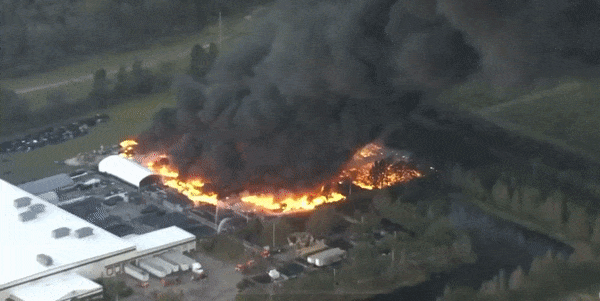
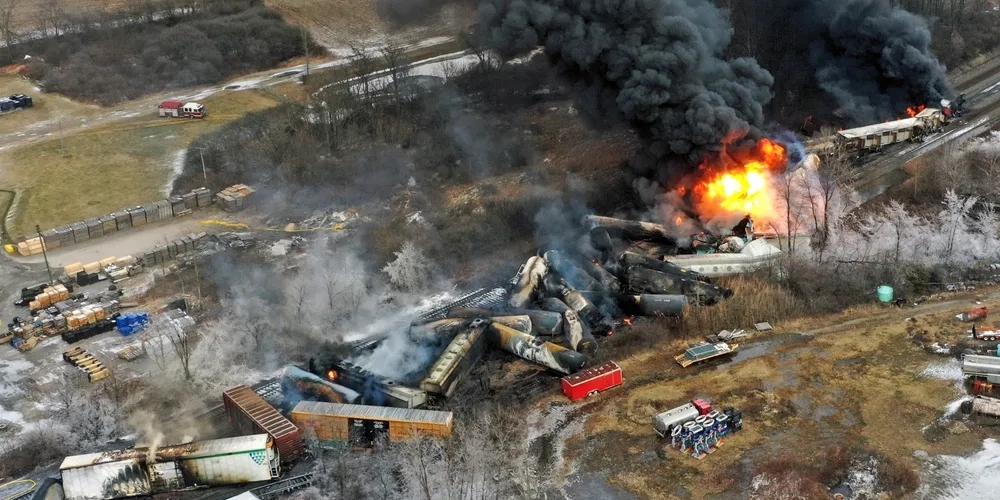
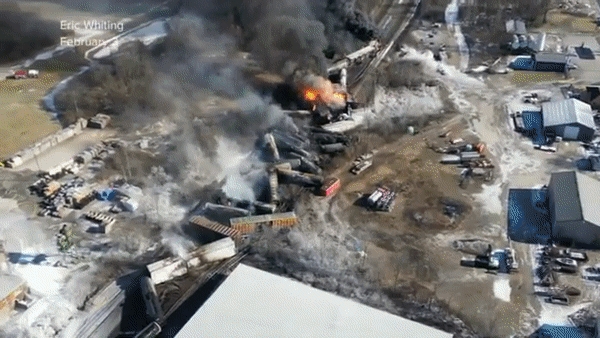

















 This
is the second most forbidden subject of climate change. Livestock
are among the top most significant contributors to the most serious
environmental problems (water scarcity, deforestation, habitat loss,
soil erosion, climate change...) from local to global, according to the
2006 United Nations FAO report titled, Livestock's
Long Shadow (wiki,
ftp-pdf).
Livestock are responsible for 18%
or as much as 51%
of greenhouse gas emissions, due to:
This
is the second most forbidden subject of climate change. Livestock
are among the top most significant contributors to the most serious
environmental problems (water scarcity, deforestation, habitat loss,
soil erosion, climate change...) from local to global, according to the
2006 United Nations FAO report titled, Livestock's
Long Shadow (wiki,
ftp-pdf).
Livestock are responsible for 18%
or as much as 51%
of greenhouse gas emissions, due to:










